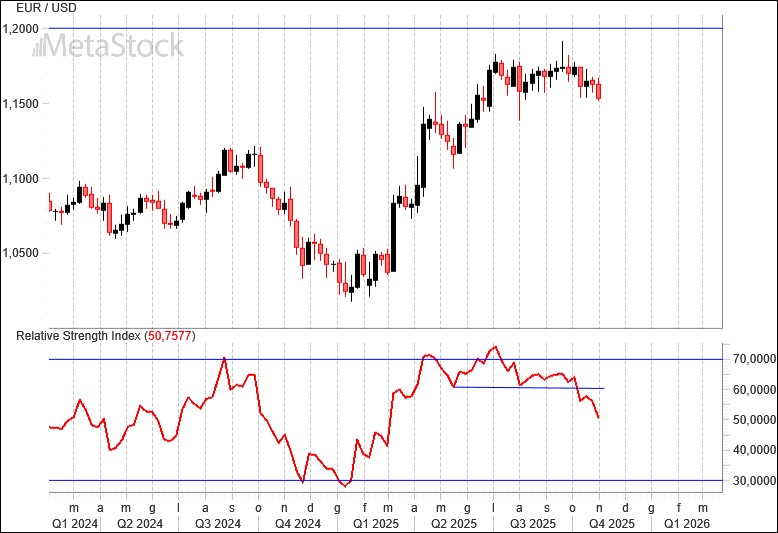- Trump reaffirms the strategic importance of the Pacific region, both economically and geopolitically. His Asia tour signals a renewed opening toward China, raising hopes in the markets for a less tense period. Meanwhile, the Fed cuts interest rates again, though Powell’s hawkish remarks temper expectations.
- Europe is showing signs of a mild economic rebound, even as France’s political crisis lingers in the background. The ECB keeps rates unchanged at 2%, while inflation eases to 2.1%.
- The euro-dollar pair remains stuck in a narrow trading range, reflecting the underlying weakness of the greenback. There are no major technical signals at the moment, except for the dollar’s gradual approach to key support levels during what is still a seasonally positive phase.
Trump’s Asian Tour Brings Renewed Momentum
Donald Trump’s Asian tour underscores the growing importance of Pacific alliances, strengthening ties with Japan and South Korea—two nations that had clashed with Washington over tariffs in recent months. The trip also highlights Trump’s intent to reach an agreement with China, marked by his meeting with President Xi and the softening of trade tensions that had led to steep tariffs on Chinese goods. The deal includes a 10% tariff reduction in exchange for agricultural imports and new tech agreements. However, Trump avoided addressing Ukraine and Taiwan, leaving potential flashpoints unresolved.
Back home, the Federal Reserve delivered what the tycoon wanted—cutting rates by 25 basis points, confident that inflation is under control and seeking to support the labor market. Yet, Chair Jerome Powell sprinkled in some hawkish comments, dampening expectations for another cut in December—a move that briefly supported the dollar.
Still, markets remain largely in “wait-and-see” mode. The ongoing government shutdown risks becoming the longest in U.S. history, adding uncertainty to the macroeconomic picture. Investors, however, appear unfazed by the possibility of a slowdown, focusing instead on record-breaking quarterly results from Wall Street’s biggest firms and the productivity boost promised by artificial intelligence.
In Europe, the ECB held rates steady as expected, reassured by inflation falling back to +2.1% in September. Policymakers see no need for further easing amid geopolitical uncertainty. In France, the political storm has temporarily calmed, but President Macron still faces a divided Parliament as he prepares to push through his next budget—a test of his coalition’s resilience.
EUR/USD Technical Analysis: Testing the Upside?
Technically, the dollar has so far failed to reach the key support zone around 1.125, which looked attainable in this phase of the market. November remains, in theory, a favorable month for the greenback before the typically more challenging month of December.
The 1.125 level also corresponds to the 38.2% Fibonacci retracement of the latest upward move—currently seen as the deepest pullback the dollar might achieve. A breakout above 1.18/1.19, however, could trigger a stronger rally, with potential targets around 1.25.

The euro doesn’t seem poised for an immediate rebound. On the weekly chart, the RSI is cooling down, offering a slightly different picture than the price action itself—and suggesting there may still be room for the pair to move lower.
A correction toward 1.12–1.13 cannot be ruled out as long as the euro fails to break above the 1.18–1.19 resistance zone.

Several oscillators confirm that the current sideways phase is not yet over.
Would you like me to adapt this version for publication on your blog (e.g., with your usual intro paragraph, headings formatting, and tone alignment with previous EUR/USD MoneyRants Analysis posts)?


Leave a Reply
You must be logged in to post a comment.